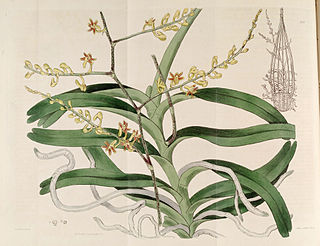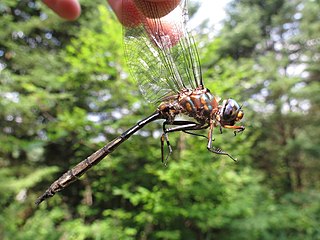An Internet bot, web robot, robot or simply bot, is a software application that runs automated tasks (scripts) over the Internet. Typically, bots perform tasks that are simple and repetitive, much faster than a person could. The most extensive use of bots is for web crawling, in which an automated script fetches, analyzes and files information from web servers. More than half of all web traffic is generated by bots.

The mountain whitefish is one of the most widely distributed salmonid fish of western North America. It is found from the Mackenzie River drainage in Northwest Territories, Canada south through western Canada and the northwestern USA in the Pacific, Hudson Bay and upper Missouri River basins to the Truckee River drainage in Nevada and Sevier River drainage in Utah.
The Williamson's marsupial frog is a species of frog in the family Hemiphractidae. It is endemic to north-central coastal Venezuela and only known from its type locality, San Esteban in the state of Carabobo. It is a poorly known species that has not been collected since it was first described, based on a single specimen collected in 1920.

Tragulus is a genus of even-toed ungulates in the family Tragulidae that are known as mouse-deer. In Ancient Greek τράγος (tragos) means a male goat, while the Latin diminutive –ulus means 'tiny'. With a weight of 0.7–8.0 kg (1.5–17.6 lb) and a length of 40–75 cm (16–30 in), they are the smallest ungulates in the world, though the largest species of mouse-deer surpass some species of Neotragus antelopes in size. The mouse-deer are restricted to Southeast Asia from far southern China to the Philippines (Balabac) and Java. Following recent taxonomic changes, several of the species in this genus are poorly known, but all are believed to be mainly nocturnal and feed on leaves, fruits, grasses, and other vegetation in the dense forest undergrowth. They are solitary or live in pairs, and the males have elongated canine teeth that are used in fights. Unlike other members of their family, the Tragulus mouse-deer lack obvious pale stripes/spots on their upper parts.

Cleisostoma is a genus of orchids with approximately 90 accepted species widely distributed through much of the Indian Subcontinent, Southeast Asia, China, New Guinea, and some of the islands of the Western Pacific.
Williamson's mouse-deer is a species of even-toed ungulate in the family Tragulidae. It is found in Thailand, and possibly in China.

Cleisostoma paniculatum is a species of orchid found in India, Assam, Bhutan, Taiwan, Thailand, Vietnam, and China.
Cleisostoma recurvum is a species of orchid found in Cambodia, Laos, Thailand, Vietnam and China.

Cleisostoma rostratum is a species of orchid found in Cambodia, Laos, Thailand, Vietnam and China.

Cleisostoma simondii is a flowering plant that grows upon larger trees, and known in Hong Kong as (Chinese:蜘蛛蘭). It also occurs in the Himalayas, Cambodia, Laos, Myanmar, Thailand, Vietnam, and other parts of China.
Schistotylus purpuratus, commonly known as purple sprites, is the only species in the genus Schistotylus from the orchid family, Orchidaceae. It is a small epiphytic orchid with up to six crowded, linear leaves and up to ten cup-shaped, pale green flowers with purple marking and a mostly white labellum. It grows in rainforest and swampy heath in eastern Australia.
Turrancilla williamsoni is a species of sea snail, a marine gastropod mollusk in the family Olividae, the olives.
Elphidium williamsoni is a species of foraminiferans belonging to the family Elphidiidae. Elphidium williamsoni is found in abundance around the coasts of the UK, predominantly in the lower end of the coast.
C. paniculatum may refer to:
Tuberculobasis williamsoni is a species of damselfly in the family Coenagrionidae first identified in Colombia and Venezuela.
Collorhabdium is a genus of snake in the family Colubridae. The genus contains the sole species Collorhabdium williamsoni. It is commonly known as the mountain dwarf snake and Williamson's reed snake. It is endemic to Malaysia.

Plectorrhiza tridentata, commonly known as the common tangle orchid, is an epiphytic or lithophytic orchid that has many coarse, tangled roots, up to twenty egg-shaped leaves and up to fifteen green or brown, star-shaped flowers with a white labellum. It grows on rainforest trees and in other humid places and occurs between the Daintree National Park in Queensland and the far north-eastern corner of Victoria.

Aphylla williamsoni, known generally as the "two-striped forceptail", is a species of clubtails in the family Gomphidae. It is found in North America.

Somatochlora williamsoni, or Williamson's emerald, is a species of emerald dragonfly in the family Corduliidae. It is found in North America.
Cleisostoma sagittatum is a species of orchid found in Borneo, Java, the Philippines and Sumatra. This species was first described by Blume in 1825.







